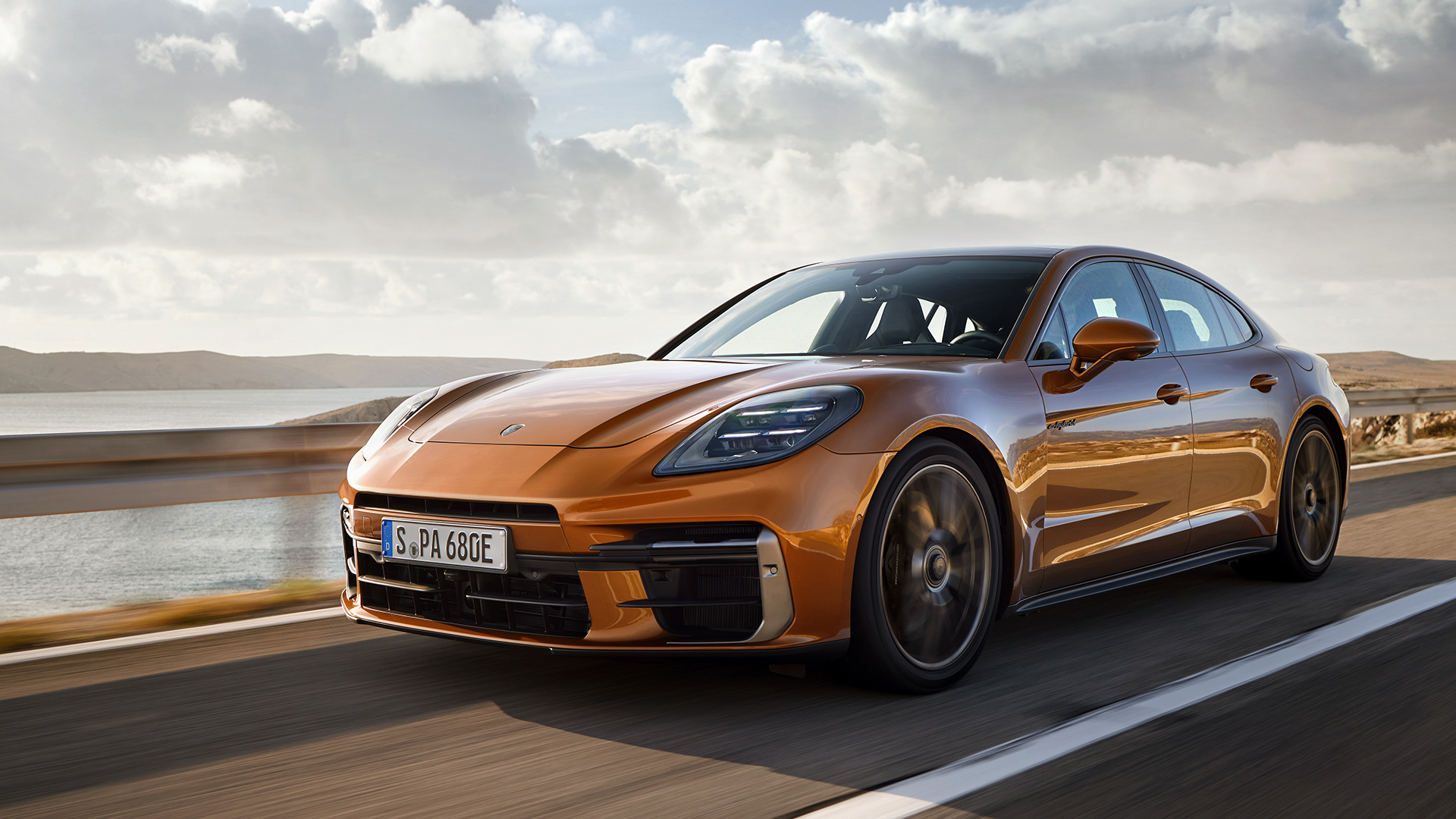
It is a dark and dank afternoon in the deepest depths of Leipzig, where Porsche manufactures the Macan and Panamera models. The third and latest generation of the latter is sat in the evening drizzle, while a Porsche engineer demonstrates its fancy new suspension system.
Optional on upcoming Panamera Turbo E-Hybrid models, the Porsche Active Ride system sees a 48-volt electrohydraulic system control a single air chamber and twin-valve dampers at each wheel. Seeing as that’s likely foreign to most, the engineer whips out a smartphone and activates a special "demo" mode to show a handful of onlookers what it can do.
Every rock and roll of the smartphone sees the large, luxury sedan sway, drop and bounce, with each corner of the vehicle seemingly alive and independent. Although it's probably not what Porsche had in mind, West Coast hip-hop videos and episodes of Pimp My Ride come to mind.
But Porsche’s Active Ride system isn’t a mere party piece, it is here to make life inside the opulent sedan more comfortable for its occupants. I was tossed the keys to an early prototype to try it for myself.
The new Panamera goes all West Coast Customs with new Porsche Active Ride system. pic.twitter.com/Kl8USIbevCNovember 27, 2023
On another level
Out on the road, Porsche’s optional Active Ride system's sole purpose is to make things more comfortable by levelling out the ride. Slam on the brakes and the nose gently lifts, while the tail drops slightly under hard acceleration. It feels a bit disconcerting from the driver’s seat, but it is the passengers that benefit most.
That’s because the net result is that anyone sitting in the backseats remains neatly insulated from the G-forces and general physics of travelling at pace. It’s worth noting that the Panamera Turbo E-Hybrid that I’m driving will sprint to 62 mph in 3.2 seconds and go on to a top speed of 196 mph in those versions where the limiter is lifted.
This is all thanks to a revised 4-litre V8 turbo petrol engine that is paired with a 140 kW (190hp) rear electric motor. Porsche has tweaked the battery pack and general efficiencies so it will now travel on electricity alone for 56 miles, while charging times have been reduced under three hours from AC outlets.
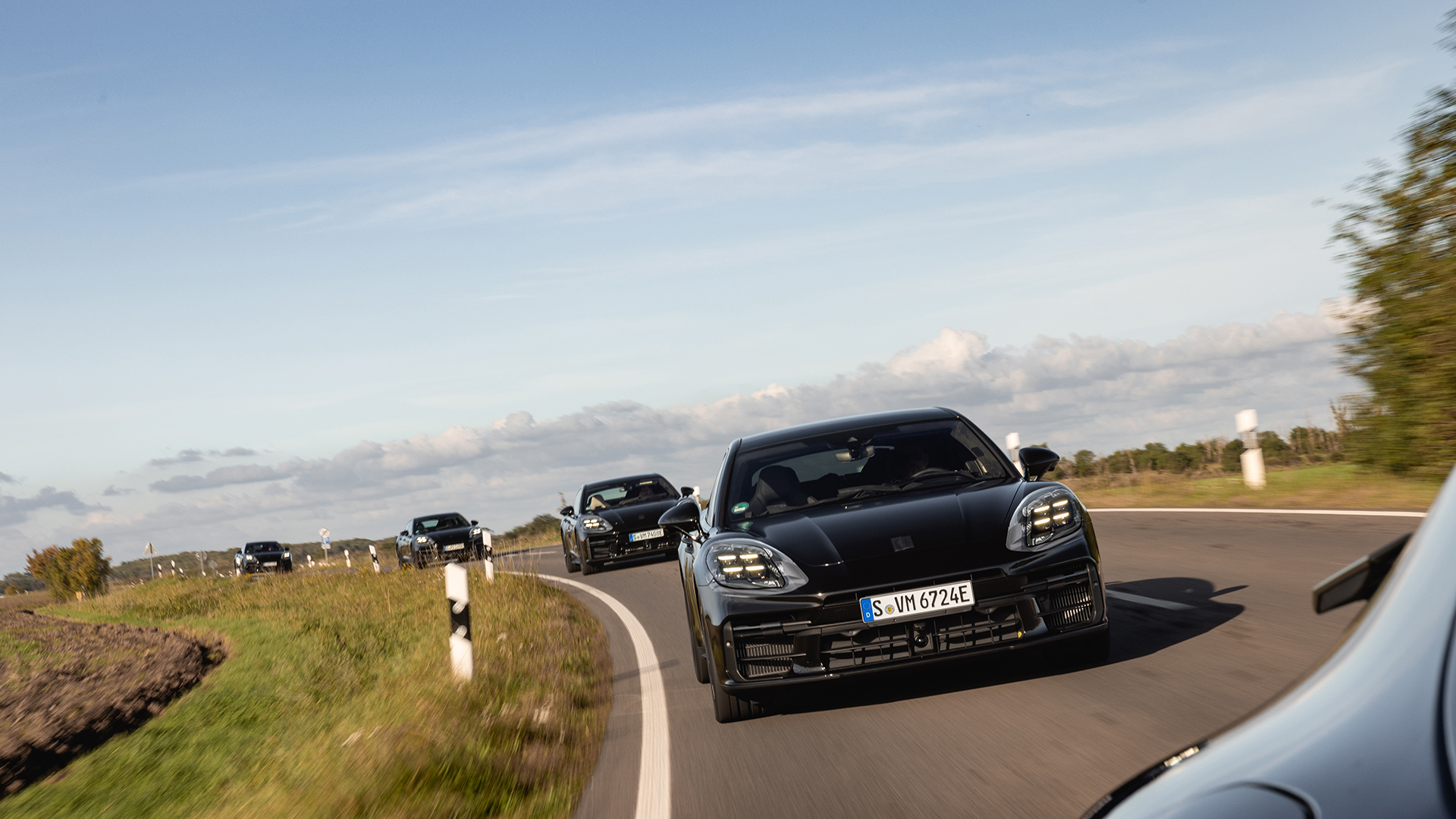
To ensure the hydraulic suspension isn't just a gimmick, Porsche installed an ECU that’s dedicated just to chassis control. Oliver Grandel, director of complete vehicle for Panamera, tells me the suspension system can react in under 25 milliseconds, meaning Active Ride comes into play much faster than the physical acceleration.
A new era for comfort
In addition to actively leaning into corners and generally smoothing things out on the road, the hydraulic suspension system also reacts when you first approach the long, low and aggressive exterior of new Panamera. Pull the door handle with keys in your pocket, and the car springs from its tarmac-scraping resting height to a more comfortable level upon which to slide into the driver's seat.
What’s more, the rear can be lowered to assist with loading heavy items into the boot. Or, if you own an ageing dog with tired legs, it drops the rear so your furry friend doesn’t have to struggle getting in.
Unfortunately, Porsche isn't releasing this generation of Panamera in the awesome Sport Turismo guise, which sees the body take on an aggressive estate car silhouette, so pooch won’t have the same palatial surroundings, but it’s still plenty big enough in the rear.
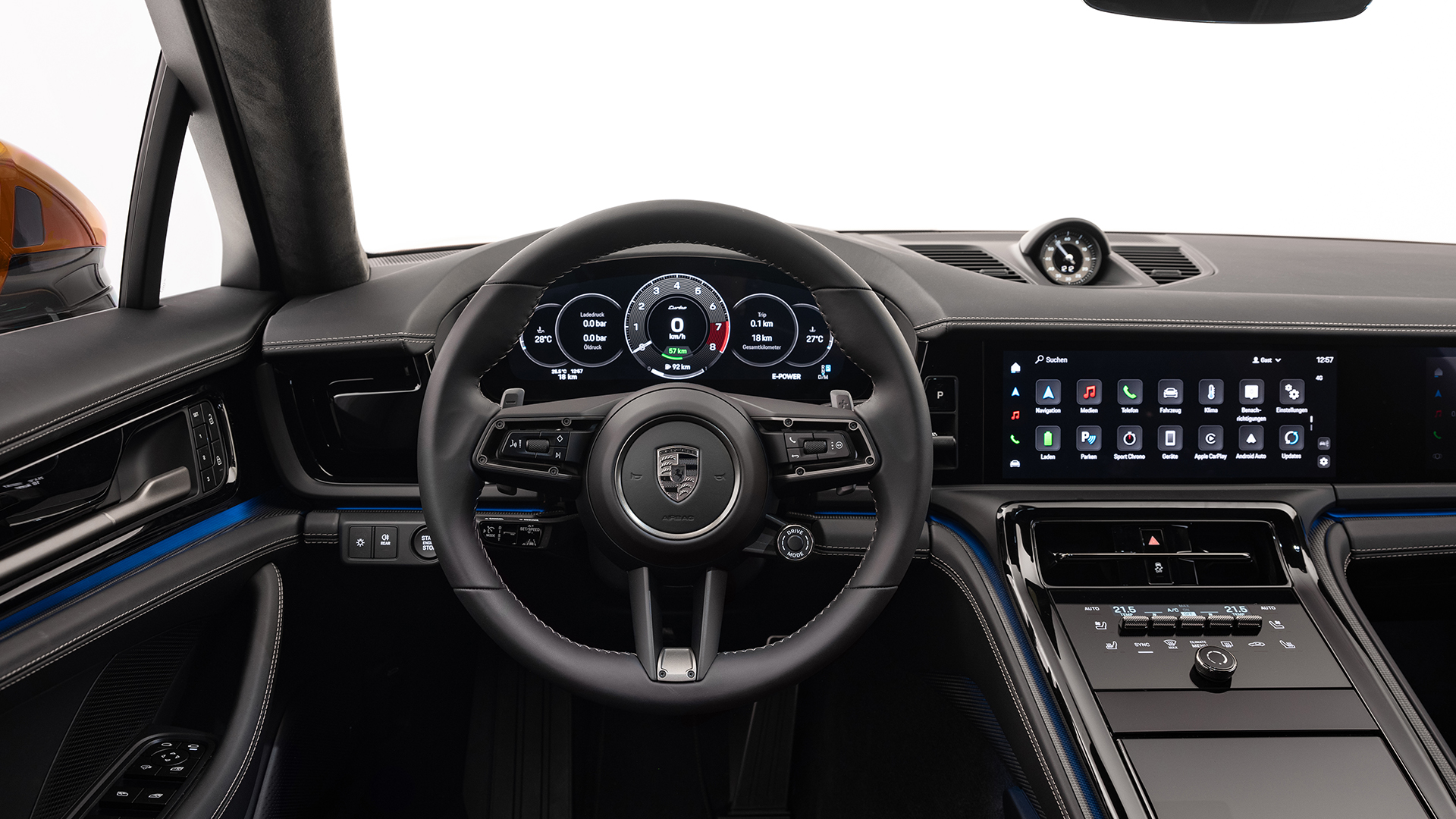
That said, the largest version is still the Executive trim line, which sees the wheelbase extended and rear legroom maximised. It's more of a chauffeur's car and is unfortunately only for Asian markets.
A shame considering rear seat passengers get a massive touchscreen upon which they can stream television boxsets or mirror their smartphone screen for gaming on the move.
Tech support
Since the explosion in popularity of Porsche's electric Taycan model, Panamera has been forced to step up its game in terms of interior tech, which is why this generation pinches most of the choice items from its electrified sibling.
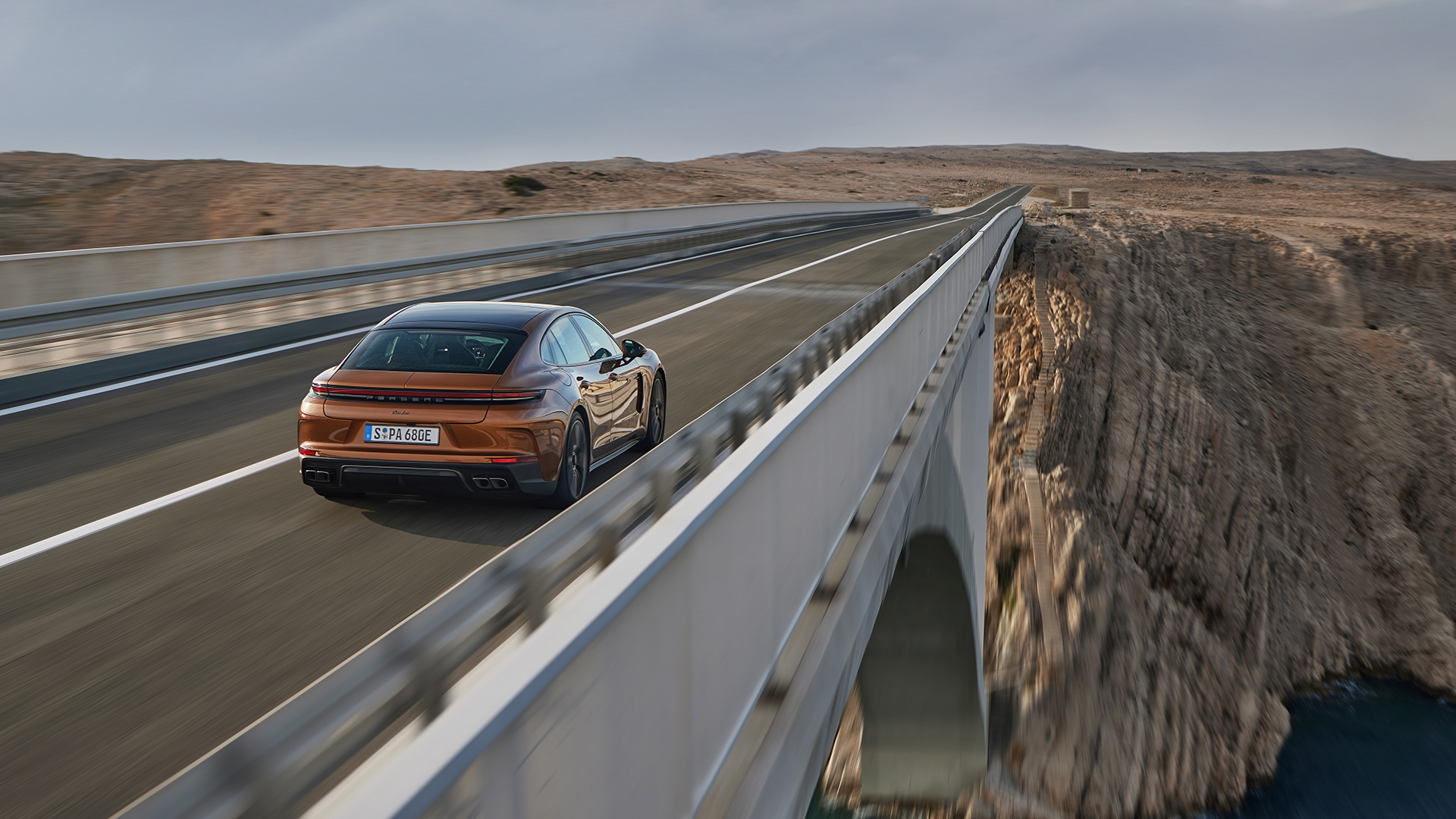
Up front, it gets the same curved 12.6-inch display that takes care of driving information, such as speed, navigation and vehicle settings. This is paired with a 12.3-inch touchscreen infotainment panel in the middle, as well as an optional 10.9-inch touchscreen that offers bespoke entertainment on the go to the front passenger.
Fitted with a special privacy filter, this smaller screen allows the front passenger to binge YouTube videos or update TikTok (the vehicle is constantly connected thanks to a built-in SIM card) without distracting the driver. Riding shotgun, the front passenger can also play DJ by meddling with Spotify or take over navigational duties.
In addition to this, there’s a small display in the back that, while it can’t be used to watch films and whatnot, rear passengers can get live driving data, such as G-force (why?), heating controls and the ability to interact with the built-in sat-nav.
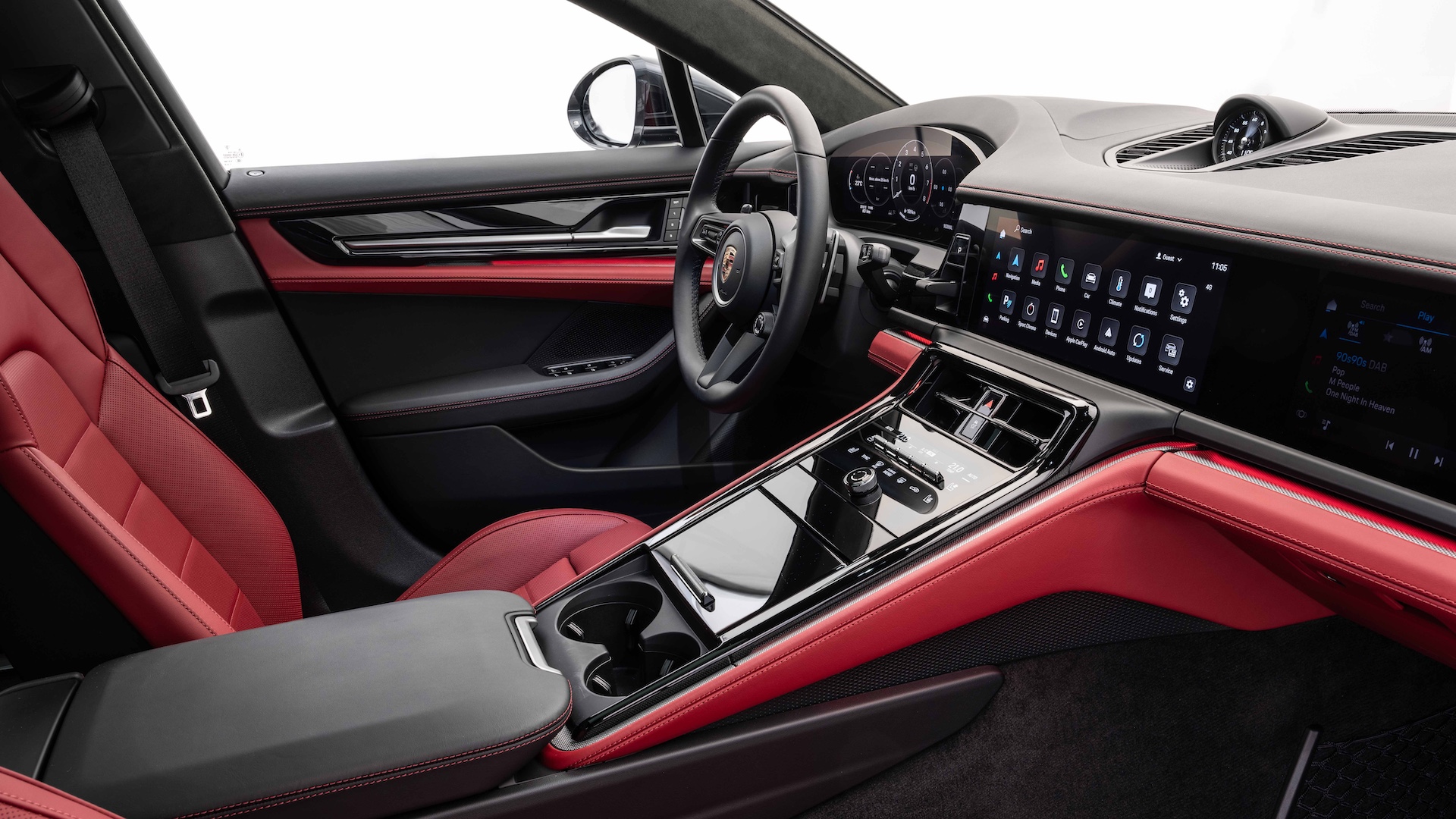
It's a generally more luxe experience inside the cabin than previous generations, with sumptuous rear seats that now recline further, as well as a much cleaner cockpit that’s had a lot of the switchgear removed in favour of subtle storage compartments. Even the gear selector has been moved, as that’s now a toggle switch the resides next to the steering wheel.
That's probably a good thing, seeing as Porsche is commanding in the region of $175,000 / £140,000 / €192,000 / AUS$280,000 for its sporty, and surprisingly hoppy, hybrid sedan.






